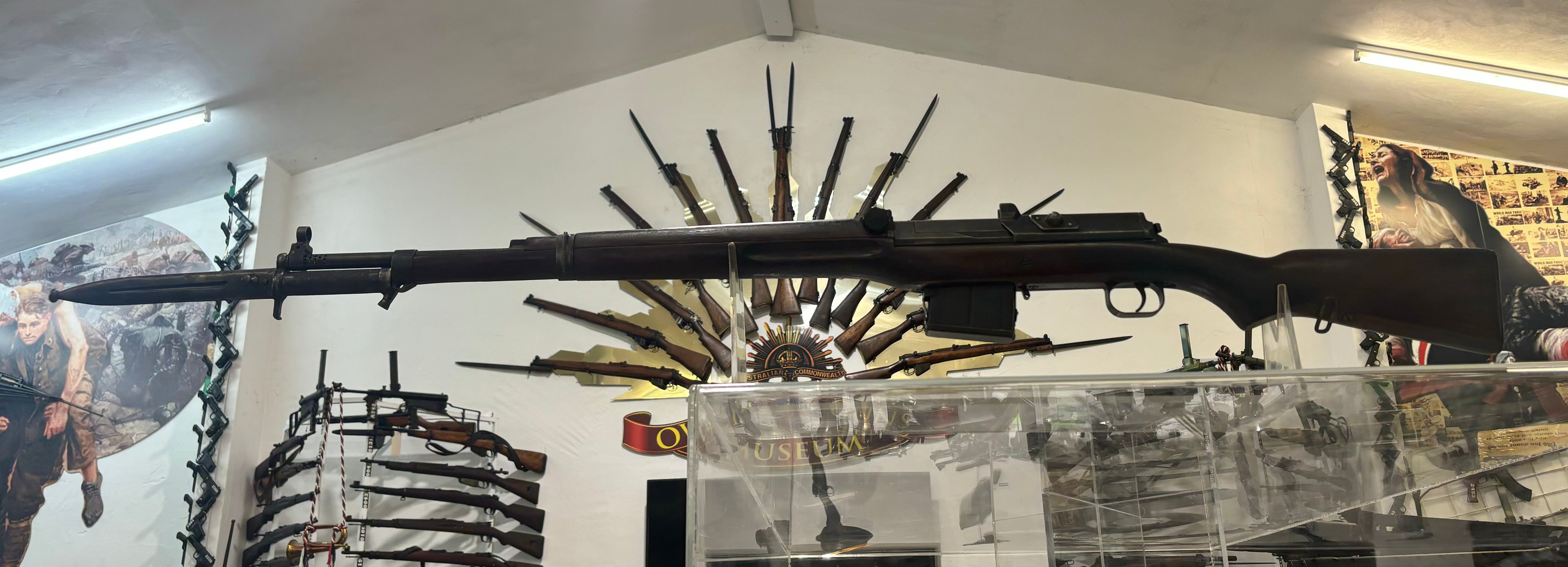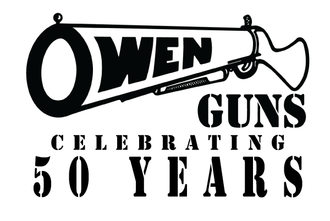
Ljungman AG42B

The Ag m/42 was designed by Erik Eklund of the AB C.J. Ljungmans Verkstäder company of Malmö, loosely following SVT mechanics around 1941, and entered production at the Carl Gustafs Stads Gevärsfaktori in Eskilstuna in 1942. Some 30,000 rifles were manufactured in all for the Swedish Army.

This was a relatively small number of weapons and the standard infantry rifle remained the 6.5 mm bolt-action m/96 Mauser.

Norwegian "police troops" trained in Sweden during World War II were issued a number of Ag m/42s and brought these rifles to Norway when the Germans surrendered in 1945. These rifles were never modified to the later Ag m/42B version.

After a number of issues had been discovered, including a serious problem with rusting gas tubes, the existing stocks of the rifle were modified between 1953 and 1956, and the reworked rifles were designated Ag m/42B. Modifications included a stainless-steel gas tube, two knobs on the breech cover, a new elevation knob for the rear sight, a rubber case-deflector, new magazines and new cleaning rod. The Ag m/42B was replaced in Swedish service in the mid 1960s by the Ak 4 (derived from the Heckler & Koch G3).

In the early 1950s, the Ag m/42B manufacture license was sold to Egypt resulting in the Hakim rifle, which uses the 7.92×57mm Mauser cartridge.[6] Sweden sold the machinery to Egypt and the Hakim was therefore built with the same machine tools used for the Ag m/42B.

The Swedish AG42B Ljungman is the first semi-automatic direct gas impingement rifle that was successfully produced and adopted by a major military. This semi-auto rifle contains many precursors to many different modern-day designs. The 6.5X55 Swede round is often considered the father of the now popular 6.5 Creedmoor round, as they both have similar ballistic performance. The actual rifle design of the AG42 would be continued for many years after Egypt purchased the tooling and produced 8mm Mauser chambered Hakim rifles.The direct gas impingement system would be utilized in major military rifles like the AR platform, which is still in widespread use even today. This rifle is often forgotten but is extremely well designed and led the way for further innovation.













